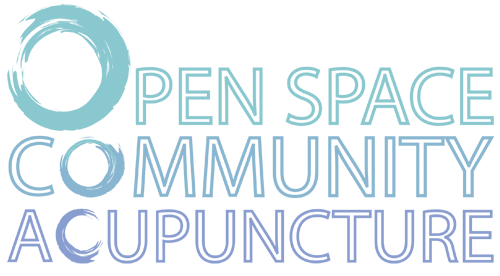 Group energy is not all in your head
Group energy is not all in your head
Has the Boston area stress got you down? You may want to try group relaxation. We pick up on and are affected by the stress around us. So too we benefit and feel more relaxed when around others who are similarly relaxing.
Research shows that mirror neurons are at the root of this phenomenon. Mirror neurons are a type of brain cell that help us empathize with one another. (You can read more about mirror neurons here.) Community acupuncturists know that when a stressed person walks into a room of others already deeply relaxing, they tend to relax too.
Moving together is better
Similarly, studies show that group exercise lowers stress levels more than exercising alone.[1] In one study, rowers synchronizing movements as a group showed a larger endorphin surge than rowers who exercised alone.[2]
Dancing improves balance and cognitive ability. It’s even better when people dance in sync.[3] Dancing tango may reduce both depression and stress levels![4] (Read more about the health benefits of dancing here.) Here in Somerville and There are many opportunities to dance in sync with others here in the greater Boston area! Blues Union (right here in Union Square), Queer Tango at Arts at the Armory, and many dance groups at MIT that are open to the public. (Know another great dancing opportunity? Tell us about it!)
Making music together lifts spirits
You don’t have to break a sweat! Singing in a group can also increase social bonds and decrease pain! [5] Again, the opportunities abound here in SomervilleBoston. Join a “Pub Sing” at Arts in the Armory Cafe, try the Revels’ RiverSing Chorus! You can participate in meet-ups like Cambridge Spiritual Music , many groups through the Whole Tone Music Academy, or just drop into a church on Sunday morning. (Tell us about your favorite local group sings by emailing us here!)
Learning musical instruments in a group brings known benefits of learning and music and multiplies them by the social benefit of getting to know others.[6] Somerville’s famous School of Honk band has periodic open sessions for new members. (If you know of affordable local music-making and learning opportunities, shoot us an email.)
Organizing together creates hope
On a political front, Rebecca Solnit advises folks to come together in action: in her Guardian opinion piece, “Don’t Despair: the climate fight is only over if you think it is,” she writes: “Taking action is the best way to live in conditions of crisis and violation, for your spirit and your conscience as well as for society.”
In all of these activities, the people coming together are building community and resilience. “Social joy” names what happens when people come together and support one another. So: dance! Sing! Become politically active! Or drop into Open Space Community Acupuncture, where building community likely includes taking a deep and restful nap.
[1] Yorks, D. et al. “Effects of Group Fitness Classes on Stress and Quality of Life of Medical Students.” The Journal of the American Osteopathic Association, November 2017, Vol. 117, e17-e25. doi:10.7556/jaoa.2017.140 Accessed online October 10, 2018 at http://jaoa.org/article.aspx?articleid=2661140
[2] Cohen, Emma E. A. et al. “Rowers’ high: behavioural synchrony is correlated with elevated pain thresholds.” Biol. Lett. 2010 6 106-108; DOI: 10.1098/rsbl.2009.0670. Published 12 January 2010. Accessed online Oct. 14, 2018 at http://rsbl.royalsocietypublishing.org/content/6/1/106
[3] Tarr, B. et al. “Synchrony and exertion during dance independently raise pain threshold and encourage social bonding.” Biol Lett. 2015 Oct;11(10). pii: 20150767. doi: 10.1098/rsbl.2015.0767. Accessed online on Oct. 12, 2018 at https://www.ncbi.nlm.nih.gov/pubmed/26510676
[4] Pinniger R, et al. “Argentine tango dance compared to mindfulness meditation and a waiting-list control: a randomised trial for treating depression.” Complement Ther Med. 2012 Dec;20(6):377-84. doi: 10.1016/j.ctim.2012.07.003
[5] Weinstein, D. et al. “Singing and social bonding: changes in connectivity and pain threshold as a function of group size.” Evolution and Human Behavior , Volume 37 , Issue 2 , 152 – 158 Accessed online on Oct. 13 2018 at https://www.ehbonline.org/article/S1090-5138(15)00105-1/abstract
[6] Clair, Alicia Ann and Karl T. Bruhn. “Benefits of Group Music Instruction.” Accessed online October 13, 2018 at http://www.childrensmusicworkshop.com/advocacy/groupmusic/
